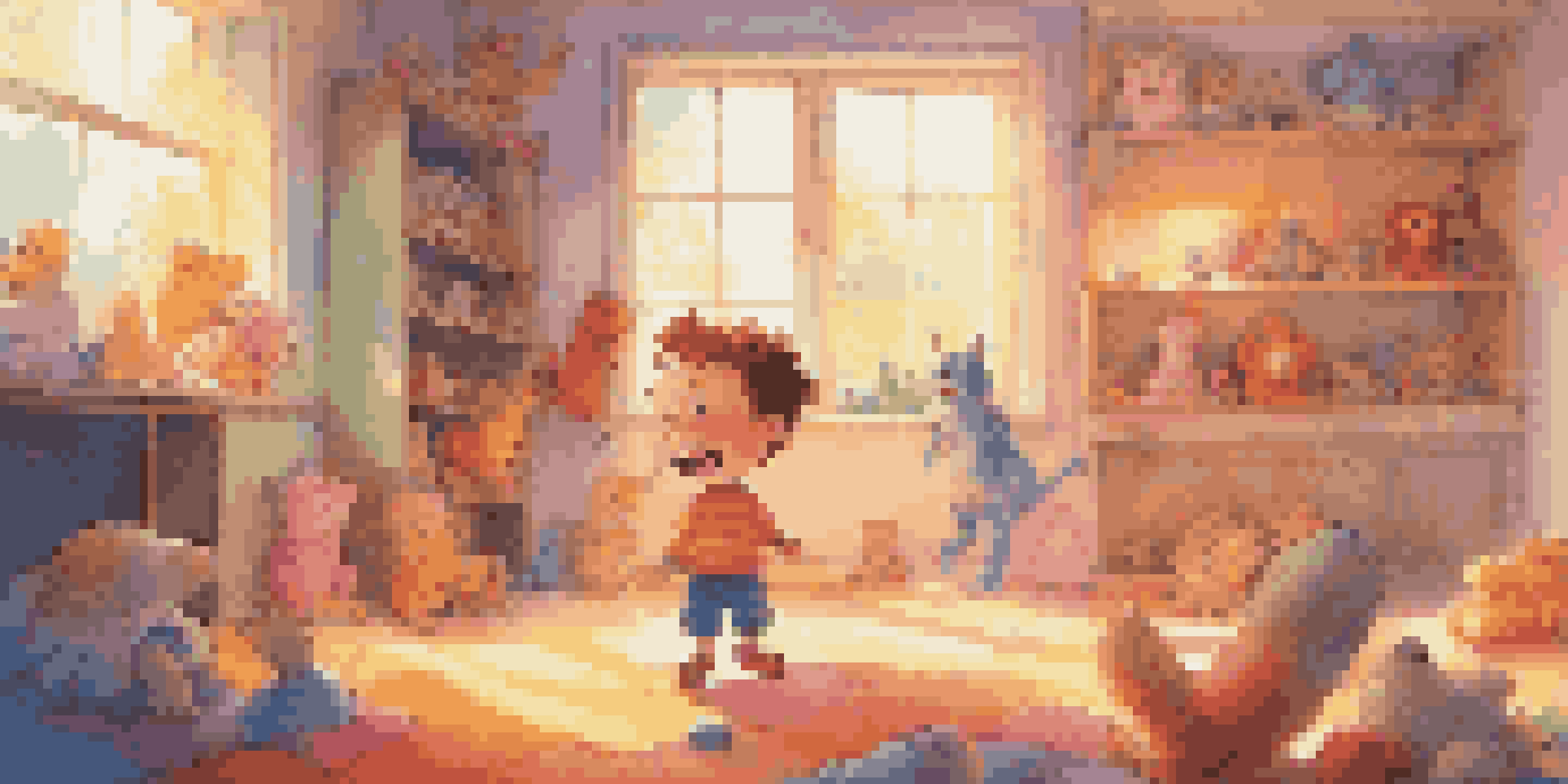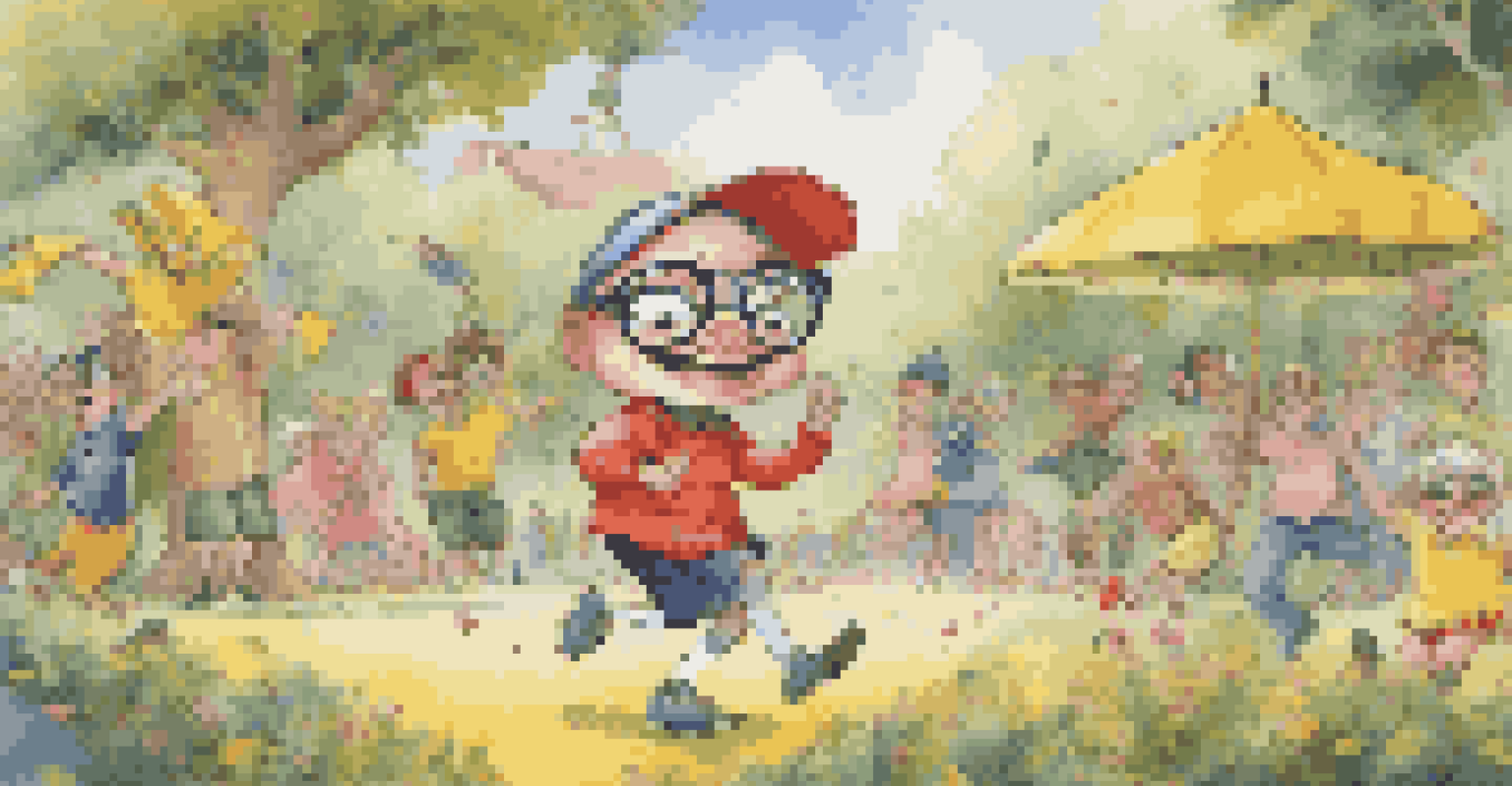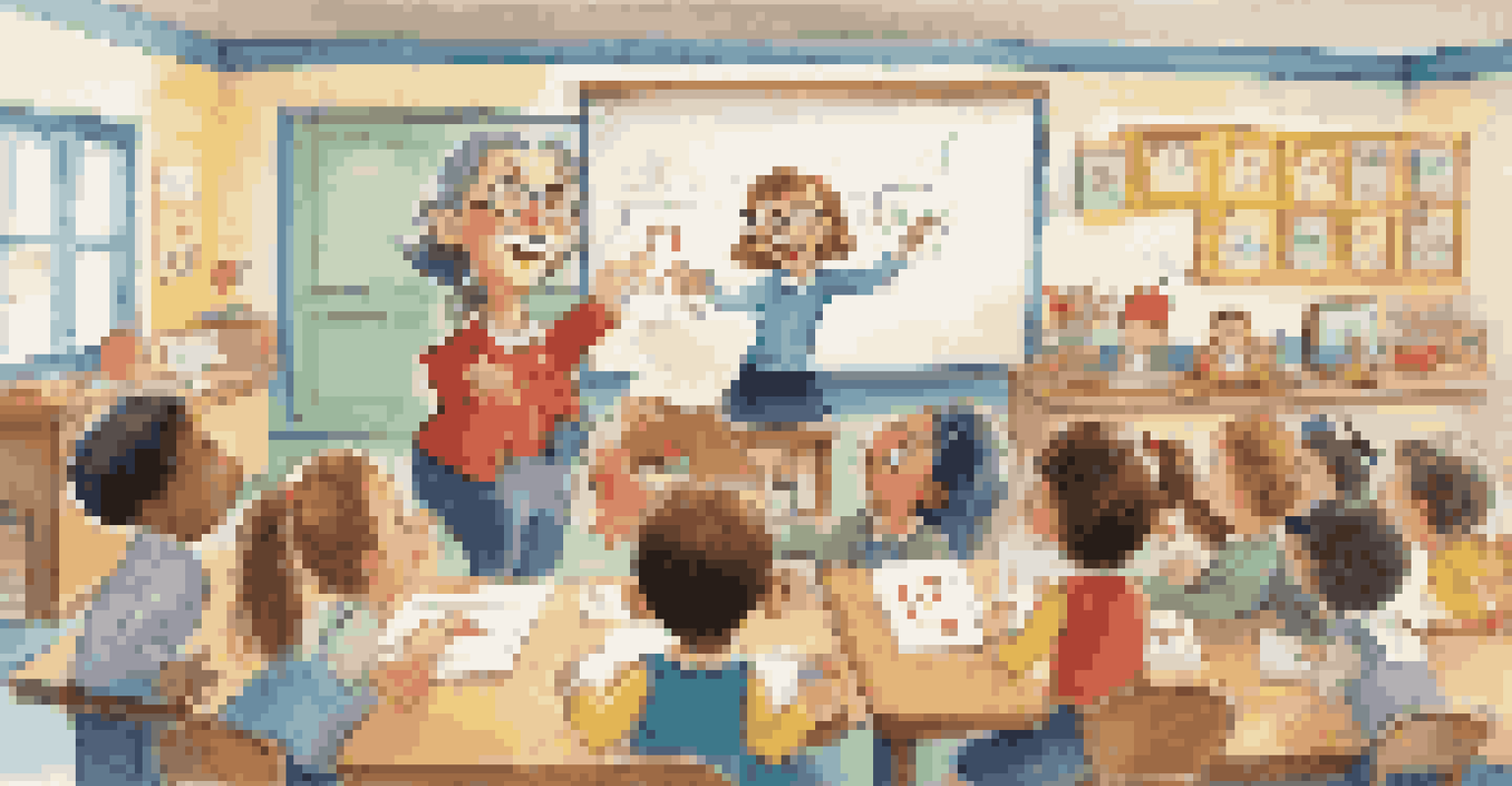The Influence of Comedy in Children's Animation Art

The Role of Humor in Engaging Young Audiences
Humor is a powerful tool in children's animation, capturing their attention and keeping them engaged. When kids laugh, they're not just entertained; they’re also more likely to absorb the stories and lessons being presented. Think about how a simple joke or a funny character can turn a mundane lesson into a memorable adventure.
Humor is the shortest distance between two people.
For instance, shows like 'Peppa Pig' use humor not just for laughs but to create relatable scenarios that children can connect with. This connection fosters a sense of understanding and allows kids to learn through laughter. By making education enjoyable, these shows help children retain information better.
Moreover, humorous animations often spark conversations between children and their caregivers, allowing for bonding moments. When parents see their kids giggling, they naturally want to join in, discussing the funny parts and deepening their relationship through shared experiences in storytelling.
How Comedy Shapes Character Development
Comedy plays a significant role in developing characters that resonate with young viewers. Humorous traits, like clumsiness or quirky habits, make characters more relatable and memorable. For instance, characters like Shrek and his witty banter not only entertain but also showcase deeper emotions and lessons.

These comedic elements often highlight the characters' strengths and weaknesses, making their journeys more compelling. Children learn valuable lessons about friendship, acceptance, and resilience through these comedic scenarios. It creates a sense of empathy as they see characters navigate challenges with a touch of humor.
Humor Enhances Learning in Kids
Incorporating humor in children's animation makes complex lessons more enjoyable and memorable.
Additionally, laughter can help children understand the complexities of emotions. By observing how characters respond humorously to difficult situations, kids can learn that it's okay to laugh at themselves and find joy even in tough times.
The Educational Benefits of Humor in Animation
Humor in children's animation isn't just for entertainment; it's also a key educational tool. By incorporating funny elements, animators can teach complex concepts in a more digestible way. For example, 'Sesame Street' cleverly uses comedy to teach numbers and letters, making learning feel like play.
The best way to cheer yourself is to try to cheer someone else up.
When children are entertained, they are more receptive to new ideas and lessons. This approach helps them develop critical thinking skills as they process jokes and the underlying messages. It’s like sneaking vegetables into a delicious smoothie—kids won't even realize they're learning!
Additionally, humor can bridge cultural gaps, introducing children to diverse perspectives. Through funny scenarios, kids can explore different cultures and ideas, fostering a sense of curiosity and open-mindedness that is essential for their development.
The Impact of Visual Comedy on Animation Style
Visual comedy is a hallmark of children's animation, using vibrant colors and exaggerated movements to evoke laughter. This style not only entertains but also enhances storytelling by conveying emotions without words. For instance, a character's silly fall can instantly make viewers laugh, even if they don’t catch the dialogue.
Shows like 'Tom and Jerry' epitomize this form of humor, relying heavily on slapstick comedy to create memorable moments. The animated antics of these characters are so engaging that they often transcend language barriers, making them accessible to children worldwide.
Comedy Shapes Relatable Characters
Humorous traits in characters help children connect emotionally, fostering empathy and understanding.
Furthermore, the visual comedy in animation encourages creativity and imagination. Children might be inspired to create their own funny stories, drawing from what they've seen. This interaction with visual humor allows for a richer, more dynamic viewing experience.
The Balance of Comedy and Serious Themes
While comedy is essential in children's animation, it's crucial to strike a balance with serious themes. Many beloved shows tackle topics like friendship, loss, and diversity through a humorous lens. This approach helps children process complex emotions while still enjoying the light-hearted aspects of the story.
For example, 'Inside Out' uses humor to explore emotions in a way that's relatable for kids. The comedic interactions between characters allow children to understand feelings like sadness and joy, showing them that it's okay to experience a range of emotions.
By blending comedy with deeper messages, animators can create a safe space for children to discuss and learn about serious topics. It encourages open dialogue, allowing kids to express their feelings while feeling supported by the humor around them.
Cultural Influences on Comedy in Animation
Cultural context plays a significant role in shaping the comedy found in children's animation. What’s funny in one culture may not resonate in another, and animators often tailor humor to suit their target audience. Shows like 'Dora the Explorer' integrate cultural elements and humor that reflect the backgrounds of their viewers.
This cultural humor helps children appreciate and celebrate diversity. By exposing them to different comedic styles and references, children learn about various cultures while enjoying laughter. It’s a delightful way to foster understanding and acceptance from a young age.
Cultural Context Influences Humor
Tailoring humor to cultural backgrounds allows children to appreciate diversity and challenge stereotypes.
Moreover, humor can also challenge stereotypes and promote inclusivity. Animation that portrays diverse characters in humorous situations encourages kids to embrace differences, contributing to a more harmonious society.
The Future of Comedy in Children's Animation
As technology evolves, the future of comedy in children's animation is ripe with possibilities. With the rise of interactive content, children can now engage with animated characters in real-time, making humor even more immersive. Imagine a show where kids can respond to a funny character, creating a shared laughter experience!
Additionally, the integration of virtual and augmented reality opens new avenues for comedic storytelling. These advancements allow animators to craft unique experiences that blend humor with interactive learning, making education both fun and engaging.

As we look ahead, it’s clear that comedy will continue to play a pivotal role in children's animation. By adapting to new technologies and cultural shifts, animators can keep humor alive, ensuring that it remains a vital part of children's development and entertainment.